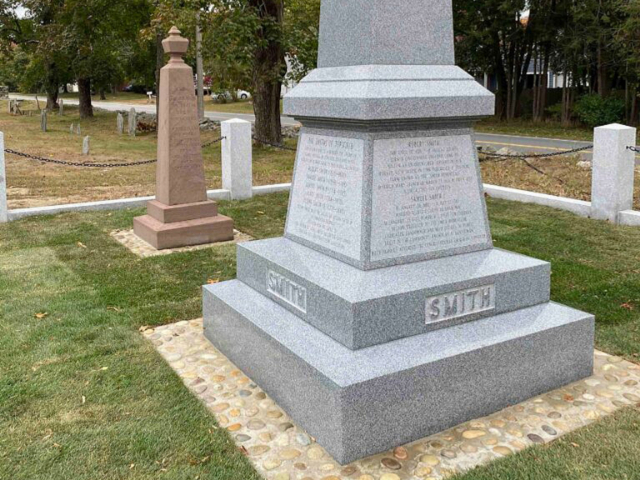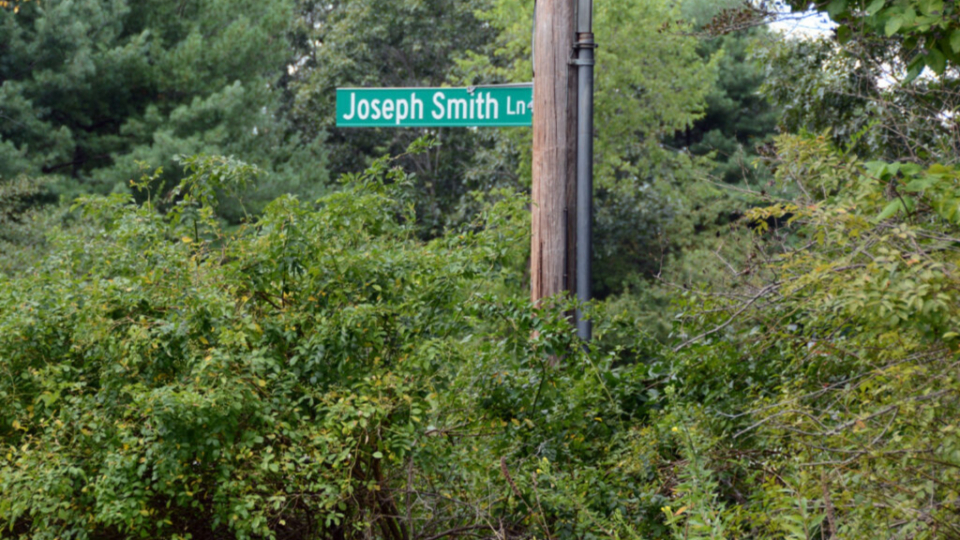
Church-history-header.jpg
Joseph Smith Lane in Topsfield, Massachusetts. Five generations of Joseph Smith Sr.’s family lived in Topsfield. Photo by Kenneth Mays, courtesy of Church NewsAll rights reserved.This story appears here courtesy of TheChurchNews.com. It is not for use by other media.
By Kenneth Mays, for the Church News
From the Joseph Smith Birthplace in Vermont to the Mormon Battalion Center in California, there are many sites that are important to the history of The Church of Jesus Christ of Latter-day Saints.
Two islands in Maine, Wisconsin pineries, the site near where “Come, Come Ye Saints” (Hymns, No. 30) was written and a recently restored home in Nauvoo, Illinois, are part of a list of 10 sites in 10 states across the United States — plus one in England — that are connected to events in Church history but are not as well known as other sites.
1. Greenville, Indiana
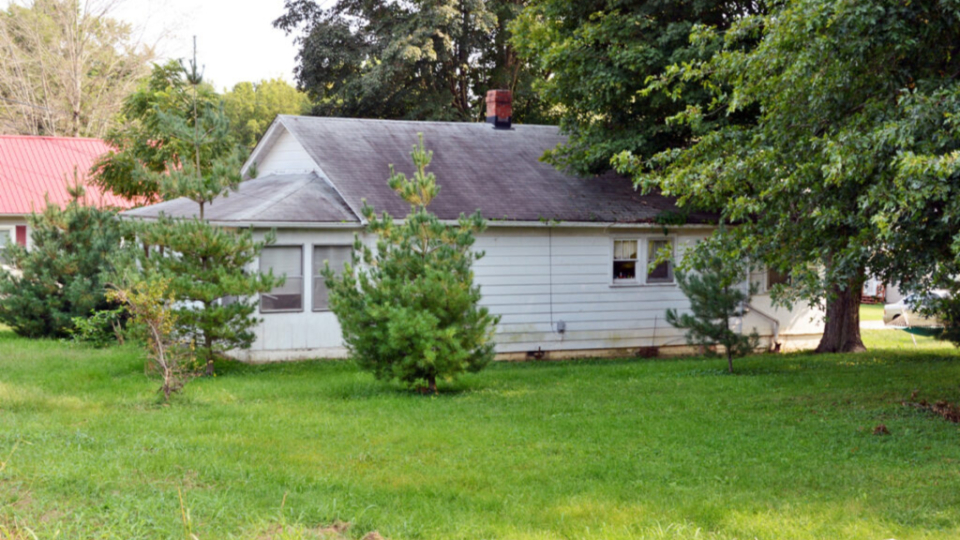
Church-History-1.jpg
While traveling from Missouri to Ohio in 1832, the Prophet Joseph Smith spent several weeks in Greenville, Indiana, to assist Newel K. Whitney, who had broken his ankle and leg. They stayed at “Mr. Porter’s public house.” This private home is on the site where the inn once stood. Photo by Kenneth Mays, courtesy of Church News.All rights reserved.While traveling from Missouri to Ohio in 1832, the Prophet Joseph Smith spent several weeks in Greenville, Indiana, to assist Newel K. Whitney, who had broken his ankle and leg. They stayed at “Mr. Porter’s public house.” Through research by Richard Lambert and Greenville historian Matt Uhl, the site where Porter’s public house once stood has been identified. The inn has been replaced by a home built in the 1940s. While in Greenville, Joseph wrote a letter, still extant, to his wife, Emma, in his own hand. He noted visiting “a grove which is just back of the town almost every day.” Such groves are still situated near the site where he stayed (see The Joseph Smith Papers, Documents, Volume 2: July 1831–January 1833, 246–257).
2. Benson, Vermont
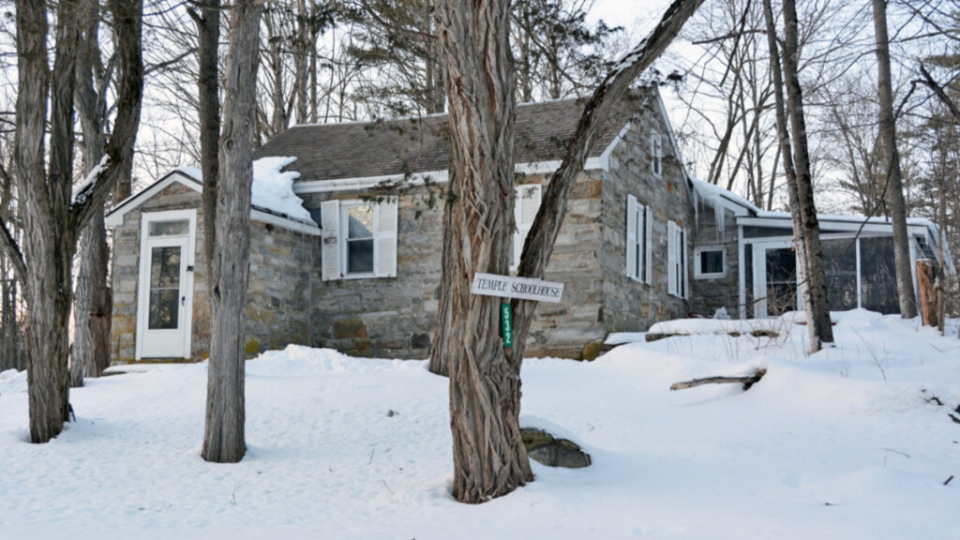
Church-History-2.jpg
This private residence dates back to an old stone structure that served as a church and a schoolhouse in Benson, Vermont, where members of The Church of Jesus Christ of Latter-day Saints would meet. Photo by Kenneth Mays, courtesy of Church News. All rights reserved.As individuals study the history of The Church of Jesus Christ of Latter-day Saints, the unfolding of major events and coming of major figures can divert attention from lesser-known but faith-promoting stories. Such was the case with the Carter family— one of whom was Jared Carter — in Benson, Vermont. After leaving Benson, he moved to a site near the Saints at Colesville, New York, where he joined the Church and started serving missions. He subsequently labored at his former home of Benson. With the help of his brothers, some 100 people joined the Church there. They met in an old stone structure that served as a church and a schoolhouse. That structure, now a private residence, still stands.
3. Fox Islands, Maine
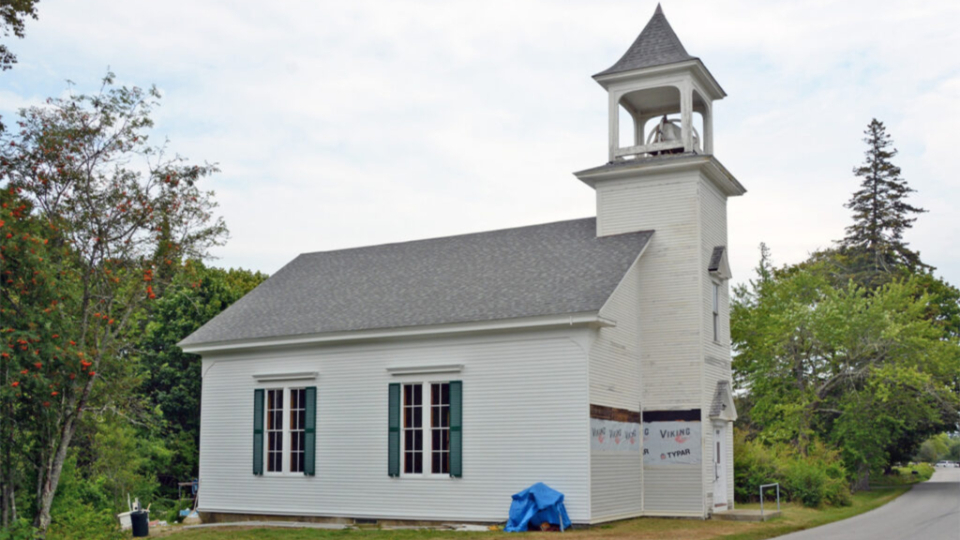
Church-History-3.jpg
The church on North Haven, an island in the Fox Islands near Rockland, Maine, where Elder Wilford Woodruff preached while he was a missionary in the area from 1837–1838. Photo by Kenneth Mays, courtesy of Church News.All rights reserved.On August 20, 1837, Elder Wilford Woodruff and Elder Jonathan Hale arrived at North Haven, one of two major islands in the Fox Islands archipelago near Rockland, Maine. The other major island there is Vinalhaven. Elder Woodruff stayed in the vicinity for about a year and was instrumental in the conversion of over 100 souls. On North Haven, there is an extant church where he preached. On Vinalhaven, there is a former schoolhouse in which he taught the people. There is also a site where Elder Woodruff would go for prayer and supplication.
4. Corydon and Tharp Cemetery, Wayne County, Iowa
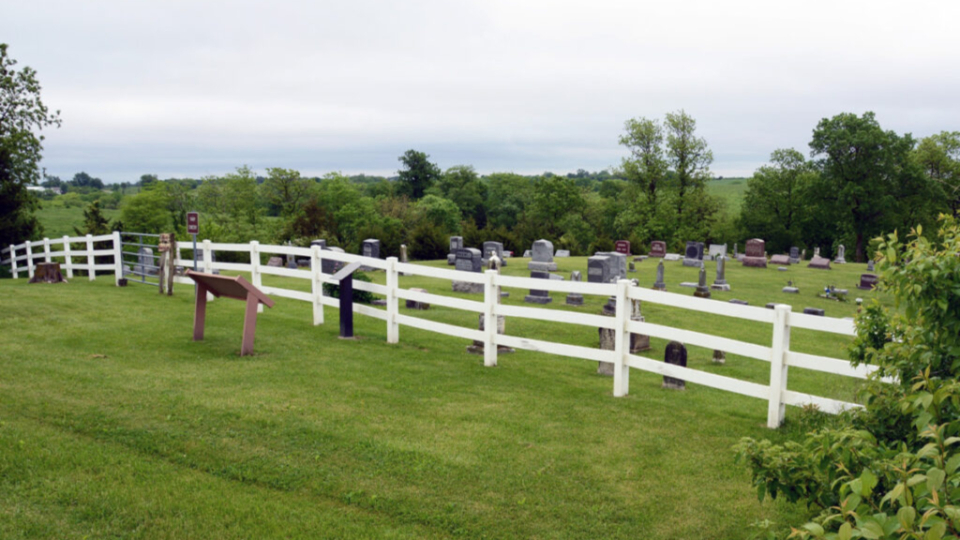
Church-History-4.jpg
Tharp Cemetery near Locust Creek Wayne County, Iowa. It is the site associated with a nearby campsite where William Clayton penned the words to the famous hymn, “Come, Come, Ye Saints.” Photo by Kenneth Mays, courtesy of Church News. All rights reserved.Tharp Cemetery is situated near Locust Creek in Wayne County, Iowa. It is the site associated with a nearby campsite where William Clayton penned the words to the famous hymn, “Come, Come, Ye Saints.” Near the cemetery is the town of Corydon, home of the Prairie Trails Museum of Wayne County, Iowa. Housed in this marvelous museum is a prominent display interpreting the writing of that meaningful hymn.
5. Rebuilt Nauvoo, Illinois, home of Edward Hunter
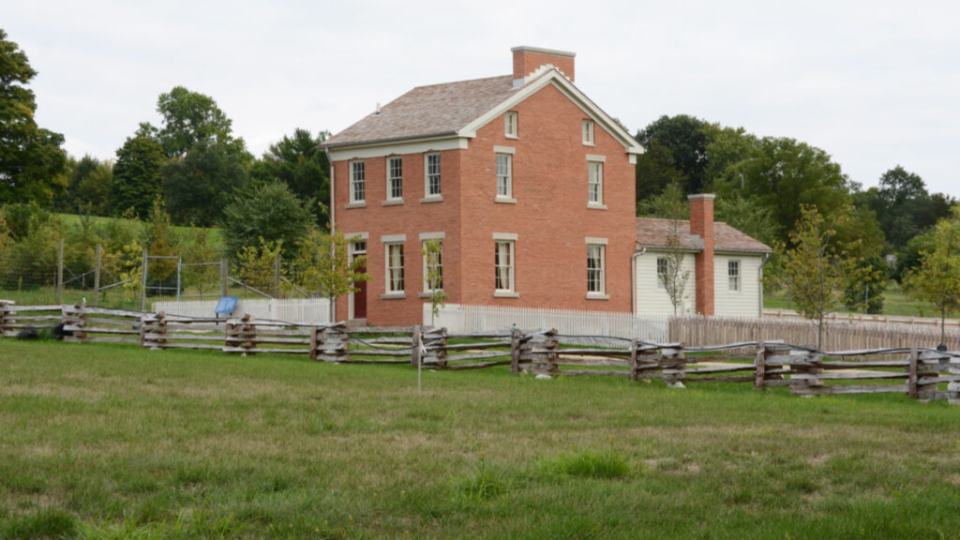
Church-History-5.jpg
The rebuilt Edward Hunter home in Nauvoo, Illinois. Photo by Kenneth Mays, courtesy of Church News.All rights reserved.The home of Edward Hunter was the site where the Prophet Joseph Smith dictated the text of what is now section 128 of the Doctrine and Covenants. Some assert that section 127 was also dictated there. The original home survived more than a century, long enough to be photographed, before it was torn down. In recent years, research was done on the site along with an archaeological dig. The home was then rebuilt on the original site, with completion in 2020. The Hunter home is included in a Temple Homes Tour interpreted by site missionaries in a virtual format.
6. Fairport Harbor, Ohio
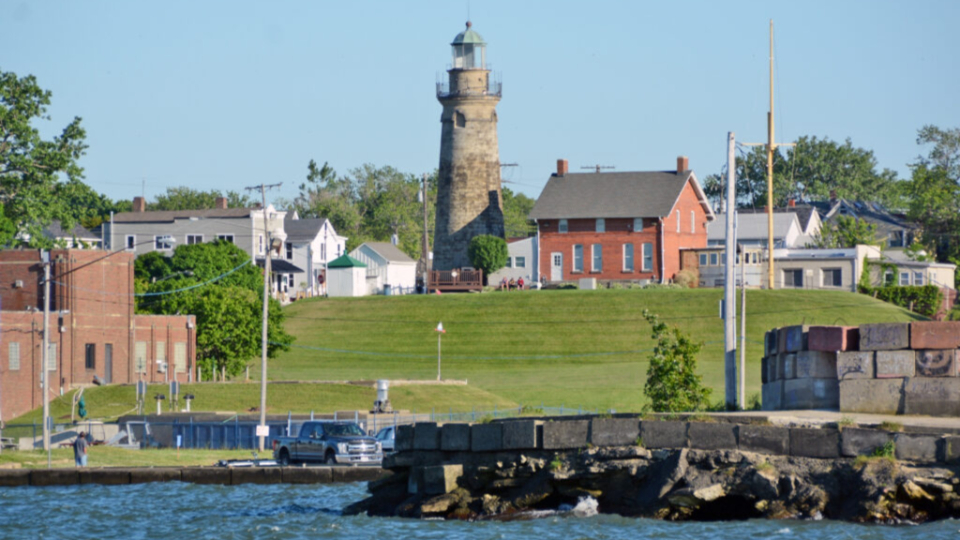
Church-History-6.jpg
The Fairport Marine Museum and Lighthouse in Fairport, Lake County, Ohio, shown from Lake Erie, is situated where the Grand River flows into Lake Erie. Fairport is about 12 miles from Kirtland, Ohio, and many passed through here going to or from Kirtland. Photo by Kenneth Mays, courtesy of Church News.All rights reserved.There is a site in Lake County, Ohio, where the Grand River flows into Lake Erie. Situated about 12 miles from Kirtland, Ohio, Fairport was important to many who were coming to or going from Kirtland. Several thousand new converts to The Church of Jesus Christ of Latter-day Saints passed through Fairport Harbor on their way to join the body of Saints at Kirtland. Going the other way, a missionary or businessperson, for example, could travel 12 miles overland from Kirtland to Fairport; board a vessel on Lake Erie; sail to Buffalo, New York; take the Erie Canal to Albany; and then boat down the Hudson River to New York City. From there, one could take a sailing vessel to Europe and beyond. The Fairport Harbor lighthouse postdates the Latter-day Saint period of Ohio history.
7. Confluence of canals, Montezuma, Cayuga County, New York
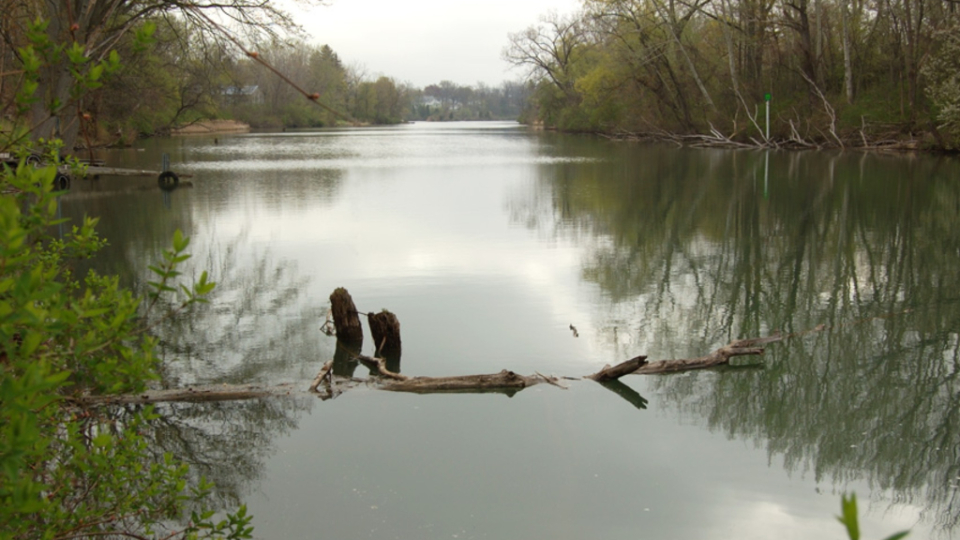
Church-History-7.jpg
Members of The Church of Jesus Christ of Latter-day Saints moving from New York to Ohio with Lucy Mack Smith would have started their journey on the Cayuga-Seneca Canal, shown here, near Waterloo, New York. After about 20 miles, that canal joined the Erie Canal at Montezuma, where the group continued on to Buffalo and Lake Erie. Photo by Kenneth Mays, courtesy of Church News.All rights reserved.In the small town of Montezuma, New York, is a historic site where some inspirational stories of early Latter-day Saints unfolded, at least in part. Following the Lord’s 1831 directive to move to “the Ohio” (see Doctrine and Covenants 38:32), several groups did so. One of those groups was led by Lucy Mack Smith, mother of the Prophet Joseph Smith. They began their journey near present-day Waterloo, New York, on the Cayuga-Seneca Canal. After about 20 miles, that canal joined the Erie Canal at Montezuma. The group continued on to Buffalo and Lake Erie. The Colesville Saints passed through this intersection as well. Remnants of the stones that lined those canals can still be seen.
8. Rush Creek — Burial site of Zion’s Camp cholera victims
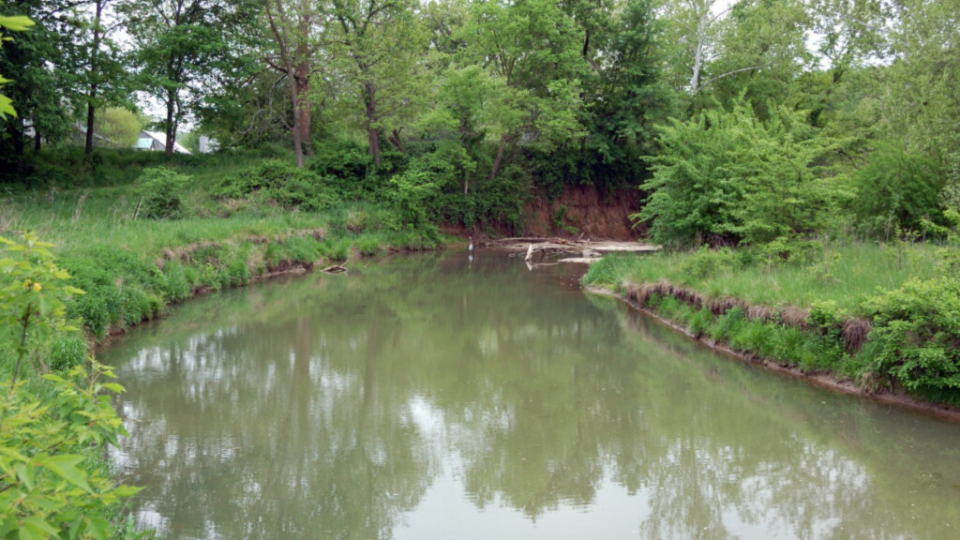
Church-History-8.jpg
Rush Creek near Liberty, Clay County, Missouri. When Zion’s Camp was established nearby, 13 of the 68 camp members died from the effects of cholera. Several decades ago, the site where those who died were buried was identified. This is looking toward the burial site. Photo by Kenneth Mays, courtesy of Church News.All rights reserved.On June 24, 1834, a group led by the Prophet Joseph Smith camped near the home of Algernon Sidney Gilbert near Liberty in Clay County, Missouri. The group, known as the Camp of Israel or Zion’s Camp, had walked over 800 miles to assist the Saints recently driven from Jackson County, Missouri. It was there that many in the company came down with symptoms of cholera. Thirteen of the 68-member camp died from the effects of the disease. Several decades ago, the site where those who died were buried was identified.
9. Topsfield, Massachusetts

Church-History-9.jpg
A view of two monuments at Pine Grove Cemetery in Topsfield, Massachusetts, that memorialize Joseph Smith Sr.’s ancestors. The new monument, which was installed in fall 2020, lists the Smith family ancestors and their contributions. Photo by Kenneth Mays, courtesy of Church News.All rights reserved.Several generations of Joseph Smith Sr.’s family lived in Topsfield, Massachusetts, a town about 20 miles north of Boston. Robert Smith, the Prophet’s third great-grandfather, settled on a farm in Topsfield after emigrating from England in the 1660s. A new monument with information about the Smith family and their contributions was placed in Topsfield’s Pine Grove Cemetery in September 2020 by the Ensign Peak Foundation. Also in the town are a church where several ancestors of Joseph were christened and a street named for Joseph Smith. The developer who named the street Joseph Smith Lane isn’t a member of the Church but wanted to preserve at least one aspect of the Smith family period in Topsfield’s history.
10. Wisconsin pineries
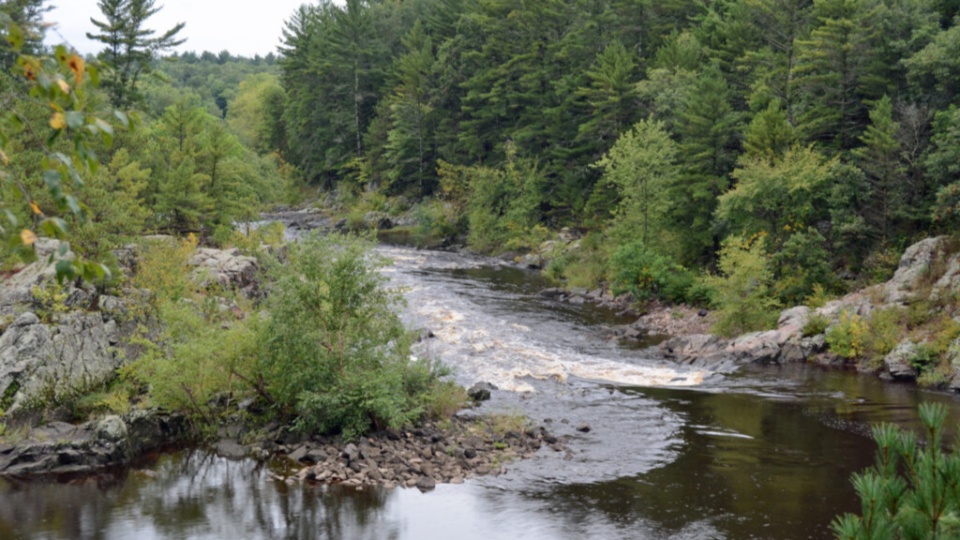
Church-History-10.jpg
Rapids on the Black River are still called the “Mormon Riffles,” a vestige from the pineries days. A group of Latter-day Saint loggers went to harvest timber from the Wisconsin pineries some 400 miles north of Nauvoo, Illinois, to help supply the town’s building boom in the early 1840s. Photo by Kenneth Mays, courtesy of Church News.All rights reserved.The phenomenal building boom of the Nauvoo, Illinois, period of the history of The Church of Jesus Christ of Latter-day Saints required much more lumber than was locally available. Consequently, a group of Latter-day Saint loggers went to harvest timber from the Wisconsin pineries some 400 miles north of Nauvoo. These men and their families worked areas in Clark and Jackson Counties from 1841 to 1845. Neillsville, Wisconsin, was one of several logging settlements that supplied the mills. The Ensign Peak Foundation and the Wisconsin Historical Society placed a monument at Neillsville in 2016.
Bonus site: River Ribble, Lancashire, England
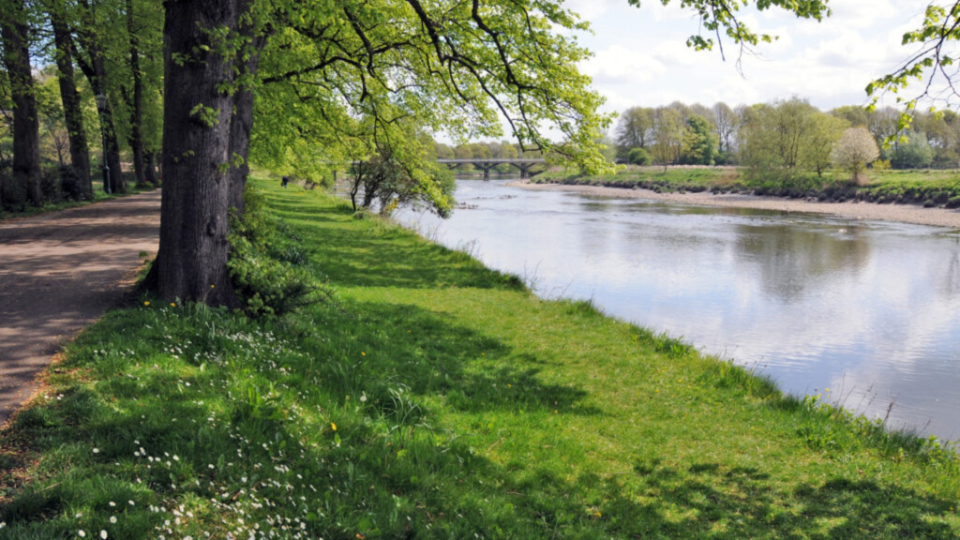
Church-History-11.jpg
The River Ribble, near the southern boundary of Avenham Park in Preston, Lancashire, England, is where the area’s first converts to The Church of Jesus Christ of Latter-day Saints were baptized. Photo by Kenneth Mays, courtesy of Church News.All rights reserved.In July 1837, Elder Heber C. Kimball and several others arrived in Liverpool, England, as missionaries of The Church of the Latter-day Saints. About a week later, the first of the British investigators to join the Church did so by accepting baptism in the River Ribble, near the southern boundary of Avenham Park in Preston, Lancashire. The first person baptized was George Watt. Over the next half century, tens of thousands more souls were baptized in the United Kingdom.
— Kenneth Mays is a board member of the Ensign Peak Foundation (formerly the Mormon Historic Sites Foundation) and a retired instructor in The Church of Jesus Christ of Latter-day Saints’ Department of Seminaries and Institutes. His image collection is available at catalog.churchofjesuschrist.org.
Copyright 2020 Deseret News Publishing Company
